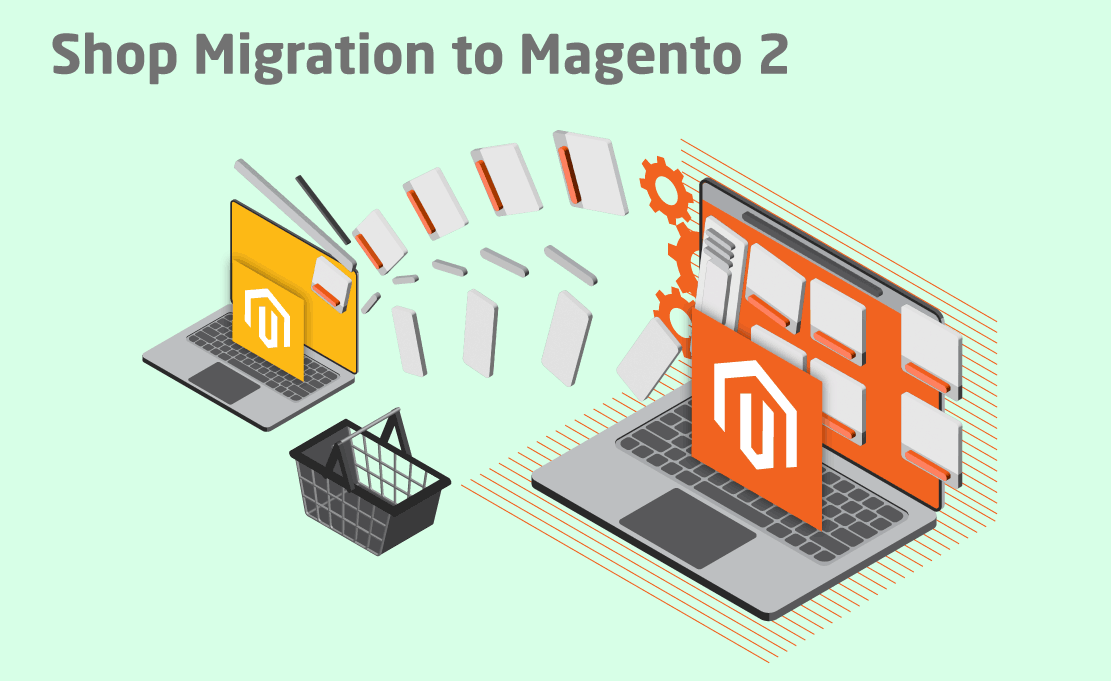Cost-Effective Modernization: How Legacy Migration Saves Money and Resources
Legacy systems, often the backbone of many enterprises, can hinder progress and innovation due to outdated technologies and limited functionalities. However, businesses have the option to embark on a transformative journey by adopting legacy migration – a strategic process that aims to modernize these legacy applications, databases, and software systems.
Table of content
- Introduction
- Why Businesses Consider Legacy Migration
- Risks and Challenges of Maintaining Outdated Software Systems
- How Legacy Migration Reduces Long-Term Costs for Businesses
- Legacy Application Migration for Business Success
- Modernization and Best Practices in Legacy Migration
- Cloud-Based Modernization and Cost-Effectiveness
- Essential Steps to Successfully Migrate a Legacy Application
- Key Pillars of Legacy Migration and Digital Transformation
- Conclusion
- FAQs
Introduction
Legacy systems, often the backbone of many enterprises, can hinder progress and innovation due to outdated technologies and limited functionalities. However, businesses have the option to embark on a transformative journey by adopting legacy migration – a strategic process that aims to modernize these legacy applications, databases, and software systems.
While once cutting-edge, these once-pioneering applications, databases, and software can now hold companies back due to their outdated architecture and limited capabilities. As a result, forward-thinking organizations are turning to the strategic process of legacy migration, a transformative innovation that breathes new life into their operations while significantly reducing long-term costs, saving money, and optimizing valuable resources.
This comprehensive blog article delves into legacy migration and its profound impact on businesses. We will explore how this process empowers organizations to embrace modern solutions, enhance business success, and foster a culture of continuous innovation. By doing so, we will uncover the untapped potential within legacy migration and how it serves as a catalyst for digital transformation.
So, join us on this enlightening journey as we delve into the world of legacy migration and discover the benefits it offers businesses aiming to thrive in today’s dynamic and competitive marketplace.

Why Businesses Consider Legacy Migration
Here, we delve deep into the compelling reasons why businesses consider legacy migration as a strategic initiative. Let’s explore the profound impact of legacy migration and how it empowers businesses to stay competitive, enhance efficiency, and drive meaningful results.
Outdated Legacy Systems’ Limitations
The first impetus for businesses to consider legacy migration lies in recognizing the limitations of their current systems. These once-revolutionary applications may now hinder progress due to their lack of compatibility with modern technologies and architectures. The scarcity of skilled professionals familiar with these legacy systems can lead to increased downtime and reduced operational efficiency. Consequently, businesses are compelled to explore modernization avenues to remain competitive in a fast-paced marketplace.
Business Benefits of Legacy Migration
Legacy migration offers an array of compelling benefits for businesses. By embracing modernized applications, organizations can streamline workflows, improve data accessibility, and drive more informed decision-making. Additionally, modernization enhances business agility, enabling companies to respond rapidly to market changes and customer demands. The transformational effect of legacy migration extends beyond cost savings; it becomes a driving force for growth and sustainability.
Cost Optimization through Migration
One of the most persuasive arguments for legacy migration is the potential for cost optimization. While the initial investment may appear substantial, the long-term savings outweigh the upfront expenses. By reducing maintenance costs, eliminating licensing fees for outdated software, and improving operational efficiency, businesses can allocate resources more effectively, fueling innovation and strategic initiatives.
The decision to embark on a journey of legacy migration stems from recognizing the limitations of outdated legacy systems and the compelling business benefits offered by modernization.

Risks and Challenges of Maintaining Outdated Software Systems
This is an in-depth exploration of the perils and hurdles associated with maintaining outdated software systems. By unraveling these inherent risks, we seek to underscore the urgency for businesses to consider legacy migration and embrace a path of sustainable growth.
Security Vulnerabilities
The most alarming risk of persisting with outdated software lies in its vulnerability to cyber threats. As technology advances, so do the tactics of malicious actors seeking to exploit weaknesses in legacy systems. The lack of regular security updates and patches exposes businesses to potential data breaches, ransomware attacks, and other cybersecurity threats. Understanding the magnitude of this risk is crucial for companies aiming to safeguard their sensitive information and maintain the trust of their customers.
Reduced Efficiency and Productivity
Outdated software systems often struggle to keep up with the demands of modern workflows, leading to reduced efficiency and productivity. The inability to integrate with newer technologies and limited functionalities hinder seamless operations, causing employees to grapple with cumbersome processes. As a result, businesses experience missed opportunities, dissatisfied customers, and a competitive disadvantage in the market.
Legacy System Maintenance Costs
While it might seem counterintuitive, maintaining outdated software systems can incur substantial costs. The scarcity of skilled professionals familiar with legacy technologies often leads to elevated labor expenses. Additionally, the rising cost of procuring spare parts and specialized hardware for obsolete systems exacerbates the financial burden. Businesses must weigh the long-term financial implications of persisting with these systems against the investment required for modernization.
Regulatory Compliance and Legal Risks
As the regulatory landscape evolves, businesses are obligated to comply with new data privacy and security standards. Outdated software systems may lack the necessary features to meet these compliance requirements, exposing businesses to potential legal repercussions and financial penalties. Ignoring the importance of regulatory compliance poses a severe threat to the reputation and continuity of the organization.
Technological Obsolescence
In today’s fast-paced, technology-driven world, the rate of innovation is exponential. Businesses relying on outdated software systems risk being left behind in the wake of transformative technological advancements. The inability to leverage the latest tools and solutions can stifle innovation, impeding the organization’s ability to adapt to changing market dynamics and seize emerging opportunities.
As explained above, the risks and challenges of maintaining outdated software systems underscore the pressing need for businesses to prioritize legacy migration. By confronting the security vulnerabilities, efficiency constraints, and financial burdens associated with legacy systems, enterprises can make informed decisions about embracing modernization.

How Legacy Migration Reduces Long-Term Costs for Businesses
This section delves into how legacy migration is a powerful catalyst for reducing long-term operational expenditures. By understanding the multifaceted ways in which this strategic initiative optimizes costs, we illuminate a path toward a more agile, efficient, and future-ready organization.
Cost Savings through Modernization
Legacy migration is not merely about replacing outdated systems with modern equivalents; it is a strategic move that breathes new life into business operations while simultaneously yielding substantial cost savings. By migrating from cumbersome and costly legacy systems to more streamlined, efficient, and technologically superior solutions, businesses can free up valuable resources and budgets that were once consumed by maintenance, support, and licensing fees.
IT Infrastructure Cost Optimization
Outdated legacy systems often rely on specialized hardware and on-premises data centers, resulting in significant infrastructure costs. Embracing modern cloud-based solutions allows businesses to escape the financial burden of maintaining physical hardware, reducing capital expenses, and shifting towards more flexible and scalable pay-as-you-go models. Cloud migration unleashes the potential for agility and cost-effectiveness, with businesses only paying for the resources they consume.
Data Accessibility and Improved Business Processes
Modernized legacy applications offer improved data accessibility and integration capabilities, catalyzing streamlined workflows and enhanced business processes. With increased efficiency and productivity, businesses can optimize resource allocation, minimize operational bottlenecks, and gain a competitive edge in the market. The enhanced data-driven decision-making process further fortifies business resilience and future-proofed growth.
Regulatory Compliance and Risk Mitigation
The potential financial implications of non-compliance with evolving data privacy and security regulations can be crippling for businesses. Legacy migration enhances data security and ensures businesses meet the necessary regulatory requirements. Modernization also safeguards the organization’s reputation and financial stability by avoiding legal risks and penalties.
Long-Term Scalability and Adaptability
In a world characterized by rapid technological evolution, legacy systems risk becoming technologically obsolete. Embracing legacy migration equips businesses with the tools to stay ahead of the curve, fostering long-term scalability and adaptability. By leveraging modern solutions, businesses can embrace change with agility, continually capitalize on emerging opportunities, and position themselves as industry leaders.
The transformative potential of legacy migration empowers organizations to remain agile, innovative, and resilient in the face of evolving market dynamics.

Legacy Application Migration for Business Success
In this section, we explore the profound impact of legacy application migration and how it empowers businesses to surge ahead in a dynamic and competitive landscape.
Enhancing Business Agility and Scalability
Legacy application migration instills a newfound sense of agility and adaptability within businesses. By shedding the constraints of outdated technology, enterprises can respond rapidly to market shifts, embrace emerging opportunities, and scale their operations efficiently. The ability to pivot in response to changing market dynamics becomes a key differentiator in an ever-shifting business terrain.
Increasing Resilience and Adaptability
Amidst disruptions and unforeseen challenges, the resilience of a business is put to the test. Legacy application migration fortifies the organization against adversities, ensuring continuity and minimizing downtime. A modernized application landscape facilitates seamless transitions and empowers businesses to endure and thrive in turbulent times.
Addressing Scalability in Legacy Application Migration
As businesses expand and evolve, scalability becomes paramount. Legacy application migration unlocks the potential for seamless growth, accommodating increased demand and user load without compromising performance. Scalability ensures businesses can capitalize on growth opportunities while maintaining optimal efficiency.
Therefore, in pursuing enduring success, legacy application migration emerges as a transformative force, empowering businesses to adapt, evolve, and surpass their competitors.
Modernization and Best Practices in Legacy Migration
Here is a comprehensive exploration of modernization approaches and best practices, shedding light on the path to seamless and successful legacy migration.
Understanding Modernization Approaches
Modernization of legacy systems comes in various forms, each catering to distinct business needs and goals. From rehosting and re-platforming to refactoring and rebuilding, businesses must discern the optimal approach to match their unique requirements. By understanding the nuances of each approach, organizations can chart a course toward maximum modernization impact.
5 Key Best Practices for Successful Legacy Migration
Comprehensive Assessment:
A successful legacy migration begins with a comprehensive assessment of the existing legacy systems and their associated challenges. This involves thoroughly examining the current architecture, functionalities, and performance metrics. By understanding the strengths and weaknesses of legacy systems, businesses can identify areas that require improvement and prioritize critical components for migration. Moreover, assessing and aligning the business requirements with the migration goals ensures that the modernization efforts are strategically driven.
Strategic Planning:
Strategic planning is a crucial aspect of successful legacy migration. It involves developing a detailed roadmap that outlines the steps, milestones, and timelines for the migration process. This planning phase should consider potential risks, challenges, and resource allocation. A well-defined migration plan enables businesses to anticipate obstacles, allocate the necessary budget, and streamline the migration journey for optimal efficiency.
Certified engineers Convenient rates Fast start Profitable conditions Agreement with English and German
EU company
speaking engineers
Data Backup and Migration Strategies:
Data is the lifeblood of any business, and its seamless migration is paramount during the modernization process. Implementing robust data backup and migration strategies is vital to ensure the continuity and integrity of critical information. It involves devising mechanisms to securely transfer data from the legacy systems to the modernized environment without loss or corruption. Additionally, data validation and reconciliation processes are implemented to verify the accuracy of the migrated data.
Testing and Validation:
Rigorous testing and validation play a pivotal role in the success of legacy migration. Before deploying modernized systems into production, businesses must subject them to tests to verify their functionality, compatibility, and performance. Testing should cover various scenarios and use cases to ensure that the modernized applications and databases meet the expected standards. See also a guide for DBS for web apps. Validation ensures the migrated systems adhere to the specified business requirements and objectives.
User Training and Support:
The success of legacy migration hinges on the readiness and acceptance of the end users. Adequate user training and support are essential for a smooth transition to the modernized environment. Employees should receive training to familiarize themselves with the new systems and processes. Providing ongoing support and assistance during the post-migration phase helps address any challenges and minimizes disruptions to daily operations.
By diligently following these best practices, businesses can navigate the complexities of legacy migration and pave the path to a triumphant modernization journey. Each practice contributes to the overall success of the migration, enabling organizations to unlock the full potential of their modernized systems and thrive in today’s competitive business world.

Cloud-Based Modernization and Cost-Effectiveness
In a digital age where agility and cost-effectiveness reign supreme, businesses embrace cloud-based modernization as a game-changing strategy. This transformative shift allows organizations to harness the unparalleled potential of the cloud to optimize costs, enhance scalability, and fortify data security. In this segment, we explore the compelling allure of cloud-based modernization and how it empowers businesses to thrive in an ever-evolving landscape.
Cost Savings and Scalability:
Cloud-based modernization revolutionizes cost management by eliminating the need for extensive on-premises hardware investments and maintenance. With cloud services adopting a pay-as-you-go model, businesses only pay for the resources they utilize, enabling cost optimization and scalability. The ability to scale resources based on demand ensures efficient resource allocation and financial prudence.
Data Security in Cloud-Based Migration:
Cloud service providers prioritize data security, offering robust encryption, access controls, and regular updates to safeguard against potential threats. Migrating legacy data to the cloud enhances data security, assuaging concerns about potential data breaches and ensuring regulatory compliance.
Embracing cloud-based modernization is a strategic imperative for businesses aspiring to thrive in today’s digital world. By leveraging the cost-effective efficiency of the cloud, organizations can achieve unparalleled scalability, robust data security, and optimized resource allocation.
Essential Steps to Successfully Migrate a Legacy Application
Migrating a legacy application is a transformative journey that demands meticulous planning and execution. As businesses seek to embrace modernization and unleash the full potential of their systems, understanding the essential steps for a successful migration becomes paramount. The following are the essential steps to successfully migrate legacy applications:
Assessing Legacy Systems and Business Needs:
The journey toward successful legacy application migration begins with a comprehensive assessment of existing legacy systems. Identifying business requirements, challenges, and opportunities ensures a clear understanding of migration objectives. This assessment lays the foundation for a targeted and purpose-driven modernization strategy.
Planning and Preparation:
Strategic planning is the bedrock of successful legacy application migration. Developing a detailed roadmap encompassing timelines, resource allocation, and risk management strategies streamlines the migration process. Thorough preparation ensures all stakeholders are aligned and prepared for the transformation ahead.
Data Backup and Migration Strategies:
The safeguarding of critical data is non-negotiable during legacy application migration. Robust data backup and migration strategies ensure the secure transfer of valuable information to the modernized environment. A seamless data migration process minimizes the risk of data loss and disruption to business operations.
Testing and Validation:
Rigorous testing and validation of the modernized application ensure a smooth transition. Comprehensive testing verifies the modernized system’s functionality, compatibility, and performance, identifying and resolving potential issues before deployment. Validation against business requirements ensures that the modernized application meets stakeholders’ expectations.
Successful legacy application migration is an art that demands meticulous planning and execution. By adhering to essential steps, businesses can confidently embrace modernization, capitalizing on efficiency, scalability, and innovation.
Key Pillars of Legacy Migration and Digital Transformation
This section explores some critical legacy migration and digital transformation pillars, illuminating the path to a future-ready and thriving organization.
Aligning Legacy Migration with Business Objectives
Successful legacy migration begins with precisely aligning migration efforts with broader business objectives. Understanding the organization’s vision, goals, and challenges ensures that migration is a strategic enabler, not merely a technical exercise. Organizations optimize the value of their migration initiatives by anchoring modernization in the context of business aspirations.
Incorporating Digital Transformation Initiatives
Legacy migration transcends the boundaries of a mere technology shift. Embracing digital transformation is essential for enterprise businesses leveraging innovation, data-driven insights, and emerging technologies. Integrating digital transformation initiatives within the migration process empowers businesses to seize competitive advantages and capitalize on disruptive opportunities.
By aligning migration efforts with business objectives and embracing digital transformation, businesses can unleash their full potential, driving growth and cementing their position as leaders in their respective industries.
Conclusion
Legacy migration allows businesses to unlock their full potential by leveraging modern solutions and reducing long-term costs. Through strategic planning, best practices, and cloud-based modernization, businesses can enhance agility, improve security, and drive overall success. By embracing legacy migration as a catalyst for digital transformation, companies position themselves to thrive in an ever-changing, technologically driven industry.
Legacy migration is not merely about abandoning old systems but embracing a future-ready approach. By investing in modernization, businesses can save costs, optimize resources, and set themselves on a path to sustained success. Embrace the transformative power of legacy migration and unlock the full potential of your business in the digital age.
FAQ
What is legacy migration, and why is it essential for businesses?
Legacy migration refers to modernizing outdated software, applications, and systems to align with current technological advancements. It is vital for businesses as it allows them to enhance operational efficiency, reduce maintenance costs, and stay competitive in the rapidly evolving digital landscape.
What are the potential risks associated with legacy systems, and how does migration mitigate them?
Legacy systems pose various risks, including security vulnerabilities, reduced efficiency, and potential non-compliance with new regulations. Migration addresses these risks by enhancing data security, improving performance, and ensuring compliance with industry standards.
How can cloud-based migration contribute to cost-effectiveness in legacy modernization?
Cloud-based migration offers cost-effectiveness through a pay-as-you-go model, eliminating the need for extensive hardware investments and reducing maintenance expenses. It enables businesses to scale resources according to demand, optimizing costs and improving overall financial efficiency.
What are the key factors when choosing a migration approach?
When choosing a migration approach, businesses should consider factors such as the complexity of their legacy systems, budget constraints, desired modernization outcomes, and the disruption the migration process may cause. A well-suited approach aligns with the organization’s unique needs and objectives, ensuring a successful migration journey.
Migrating legacy software can help businesses keep up with modern tech trends, effectively face industry challenges, and offer a superior user experience to their clients. Contact us now if you are tired of the old order and want to embrace the new paradigm shift of legacy migration.





